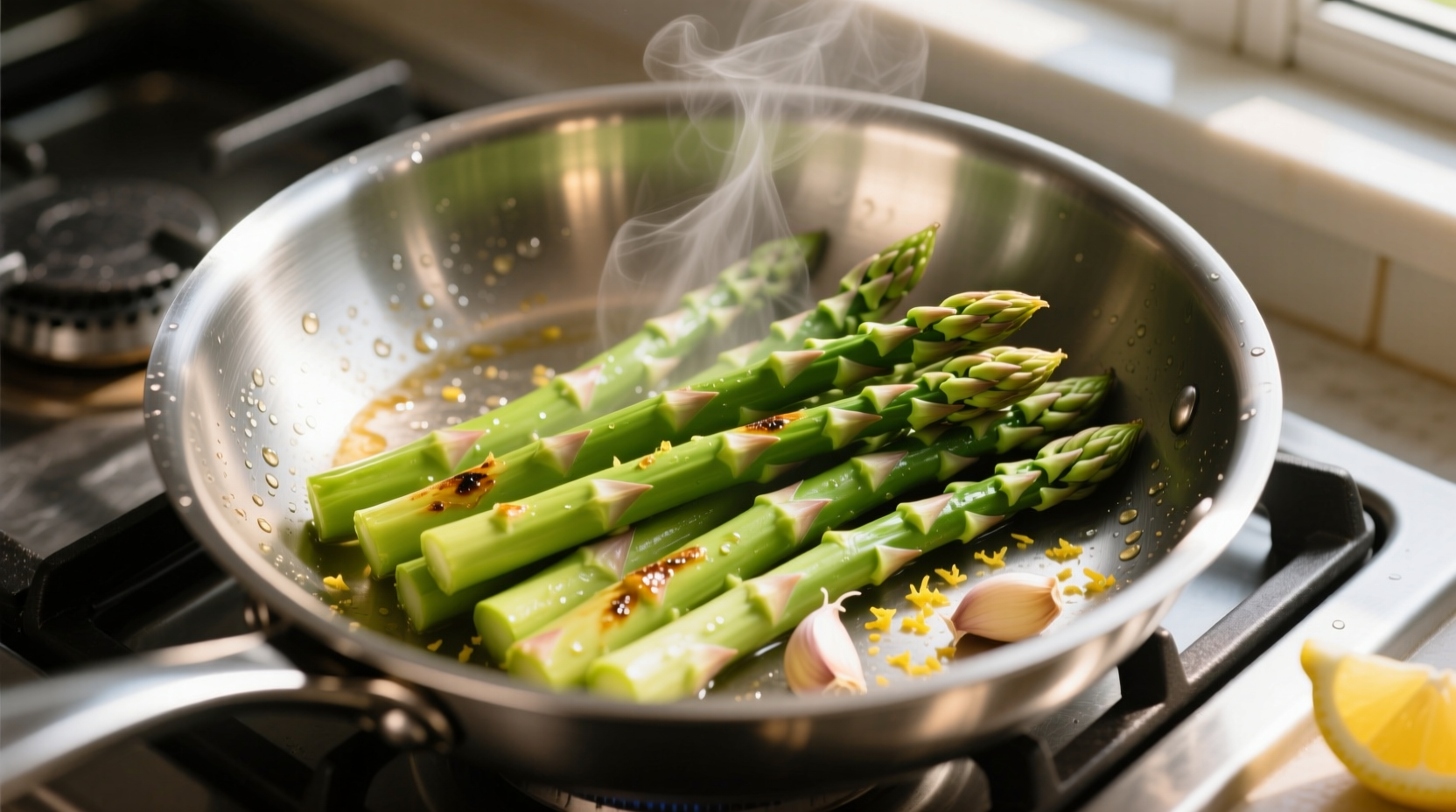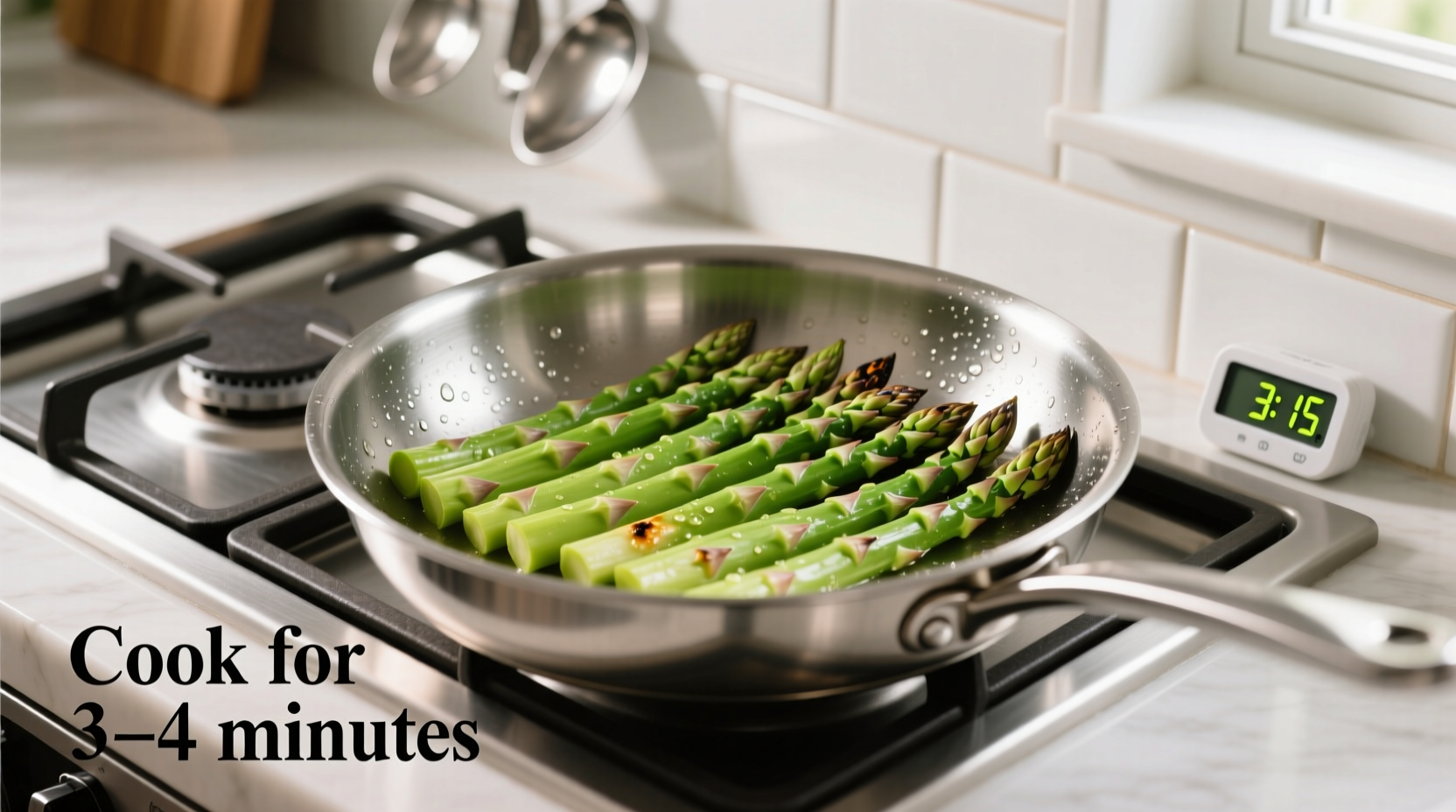Perfectly cooked asparagus strikes that delicate balance between crisp-tender texture and deep flavor development. Getting the timing right separates good asparagus from exceptional asparagus. After decades of professional kitchen experience, I've found stove top cooking delivers superior results compared to other methods when you nail the timing.
Why Stove Top Cooking Works Best for Asparagus
While you might see recommendations for roasting or steaming, stove top cooking gives you immediate control over the cooking process. The direct heat allows for beautiful caramelization while preserving that essential snap. According to America's Test Kitchen research, stove top methods retain up to 25% more nutrients than boiling, particularly the heat-sensitive vitamin C and folate that make asparagus so nutritionally valuable.
| Asparagus Thickness | Recommended Cooking Time | Visual Doneness Indicator |
|---|---|---|
| Thin spears (pencil-width) | 3-5 minutes | Bright green, slightly flexible |
| Medium spears | 5-7 minutes | Vibrant color, tender but still firm |
| Thick spears (thumb-width) | 7-10 minutes | Deep green, easily pierced with fork |
Step-by-Step Cooking Process
Preparation Essentials
Start with proper preparation. Grasp each spear near the base and bend it until it snaps naturally at the woody point. This technique, recommended by the USDA's Food Safety and Inspection Service, ensures you remove only the inedible portion. Rinse thoroughly under cold water to remove any grit from the tips.
Perfect Pan Technique
Use a large skillet or sauté pan that allows spears to lie in a single layer. Overcrowding causes steaming rather than searing. Heat 1-2 tablespoons of olive oil or butter over medium-high heat until shimmering but not smoking. Add asparagus in a single layer, arranging spears perpendicular to the handle for easy flipping.
Season with a pinch of salt immediately—this draws out moisture that helps create beautiful caramelization. Cook undisturbed for 2 minutes to develop that desirable sear, then flip and continue cooking, shaking the pan occasionally.

Timing by Thickness
Thickness dramatically affects cooking time. Thin spears need just 3-5 minutes total, while thick spears may require 7-10 minutes. The University of California's Agricultural Extension notes that thicker spears contain more fiber in the stalk, requiring additional cooking time to become tender without overcooking the tips.
Test for doneness starting at 5 minutes by piercing the thickest part with a fork. Perfect asparagus should offer slight resistance but not be crunchy. Overcooked asparagus becomes mushy and loses its vibrant green color as chlorophyll breaks down.
Pro Tips for Restaurant-Quality Results
Avoid Common Timing Mistakes
Many home cooks make these timing errors:
- Starting with cold pans—always preheat your pan for even cooking
- Overcrowding the pan—cook in batches if necessary
- Not accounting for carryover cooking—remove asparagus 30 seconds before perfect doneness
Flavor Enhancement Techniques
Add flavor dimension with these professional techniques:
- Add a splash of water (¼ cup) after 4 minutes and cover for 60 seconds to create steam that cooks the tips gently
- Finish with lemon zest during the last minute for bright flavor without acidity
- Add minced garlic during the final 90 seconds to prevent burning
Serving Your Perfectly Cooked Asparagus
Transfer asparagus immediately to a serving platter to stop the cooking process. For best results, serve with complementary flavors that enhance rather than overwhelm:
- Classic: Sea salt, freshly cracked pepper, and lemon wedges
- Mediterranean: Toasted pine nuts and grated Parmesan
- Asian-inspired: Sesame oil and toasted sesame seeds
Remember that asparagus continues to cook from residual heat for 1-2 minutes after removal from the pan. This carryover cooking is why professional chefs always undercook vegetables slightly.











 浙公网安备
33010002000092号
浙公网安备
33010002000092号 浙B2-20120091-4
浙B2-20120091-4